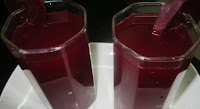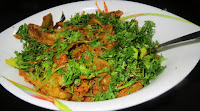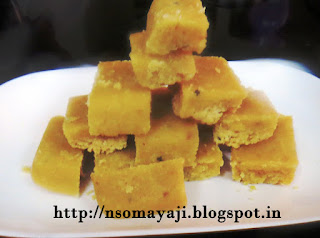Navilu Kosu/Knolkol/Kohlrabi and Spring Onion Curry is a simple and quick dish. Though Spring onions are used more in chinese dishes, it is also used in our South Indians cooking. It is not only good for health it also helps to add the taste to the curry or any other dish. Like you can prepare Rice rotti, Ragi Rotti or any other rotti. It can be used in parathas, curries and spring rolls. This curry is simple and easy to prepare. It can be served with any main dish like chapatis, plain rice, paratas, pooris and dosas.
Lets see some benefits of eating Spring Onions in our diet.
Spring Onions combine the nutrients of onions and greens. They are rich source of Vitamin K and Vitamin C and Vitamin A. They help us in curing and reducing the various harmful diseases. Spring onions lowers the blood sugar level. It is good for common cold. It is also used for good digestion. It helps the blood circulation in the body. They are rich in antioxidants. Vitamin C helps in lowering the high cholesterol and blood pressure levels in our body. They also help the bones to be strong. Good for good vision. It protects against any infections and stomach complications.
No dal is used in this curry.
Spring Onions : 1 Bundle
Knolkol/Navilukosu : 2 to 3 (Small size)
To Grind :
Mustard seeds : 1/2 Teaspoon
Jeera/Cucumin seeds : 1/2 Teaspoon
Coconut : 2 to 3 Tablespoons
Green chilly : 2 to 3
Tamarind : A small marble size
To Add :
Salt : as required
Coriander leaves : 2 Tablespoons
Seasoning :
Oil : 1 Teaspoon
Mustard seeds : 1/2 Teaspoon
Methi seeds : 1/4 Teaspoon
Ingh : a pinch
Curry Leaves : 5 to 6
2. Wash and peal the outer layer of Knolkol and cut it into small pieces.
3. Cook both the vegetables together with required water till they turn soft.
4. Grate or cut coconut and grind mustard seeds, jeera, tamarind and green chilly with little water.
5. Add this ground coconut mixture to cooked vegetables. Add salt.
6. Mix it well and add water if required. Let it cook on medium flame for 2 to 3 minutes.
7. Stir in between so that it does not get burnt at the bottom.
8. Shift this Spring Onion and Knolkol curry to a serving dish. Add mustard seeds seasoning to the curry. Add coriander leaves to the curry.
9. " Spring Onion - KnolKol " curry is ready to serve.
Time : 15 Minutes.
Serves : 3 to 4.
I have used Knolkol and spring onions and some spices.
Lets see some benefits of eating Spring Onions in our diet.
Spring Onions combine the nutrients of onions and greens. They are rich source of Vitamin K and Vitamin C and Vitamin A. They help us in curing and reducing the various harmful diseases. Spring onions lowers the blood sugar level. It is good for common cold. It is also used for good digestion. It helps the blood circulation in the body. They are rich in antioxidants. Vitamin C helps in lowering the high cholesterol and blood pressure levels in our body. They also help the bones to be strong. Good for good vision. It protects against any infections and stomach complications.
No dal is used in this curry.
Ingredients :
To Cook :Spring Onions : 1 Bundle
Knolkol/Navilukosu : 2 to 3 (Small size)
To Grind :
Mustard seeds : 1/2 Teaspoon
Jeera/Cucumin seeds : 1/2 Teaspoon
Coconut : 2 to 3 Tablespoons
Green chilly : 2 to 3
Tamarind : A small marble size
To Add :
Salt : as required
Coriander leaves : 2 Tablespoons
Seasoning :
Oil : 1 Teaspoon
Mustard seeds : 1/2 Teaspoon
Methi seeds : 1/4 Teaspoon
Ingh : a pinch
Curry Leaves : 5 to 6
Method :
1. Wash and clean spring onions and cut it in to small.2. Wash and peal the outer layer of Knolkol and cut it into small pieces.
3. Cook both the vegetables together with required water till they turn soft.
4. Grate or cut coconut and grind mustard seeds, jeera, tamarind and green chilly with little water.
5. Add this ground coconut mixture to cooked vegetables. Add salt.
6. Mix it well and add water if required. Let it cook on medium flame for 2 to 3 minutes.
7. Stir in between so that it does not get burnt at the bottom.
8. Shift this Spring Onion and Knolkol curry to a serving dish. Add mustard seeds seasoning to the curry. Add coriander leaves to the curry.
9. " Spring Onion - KnolKol " curry is ready to serve.
Note :
No need to add any dal to this curry. Adding onions and garlic is optional. Adding more chilly is optional. You can add a cup of curd instead of tamarind to the curry. Add curd once the curry turns cool. Mix it well and serve.Time : 15 Minutes.
Serves : 3 to 4.





















































